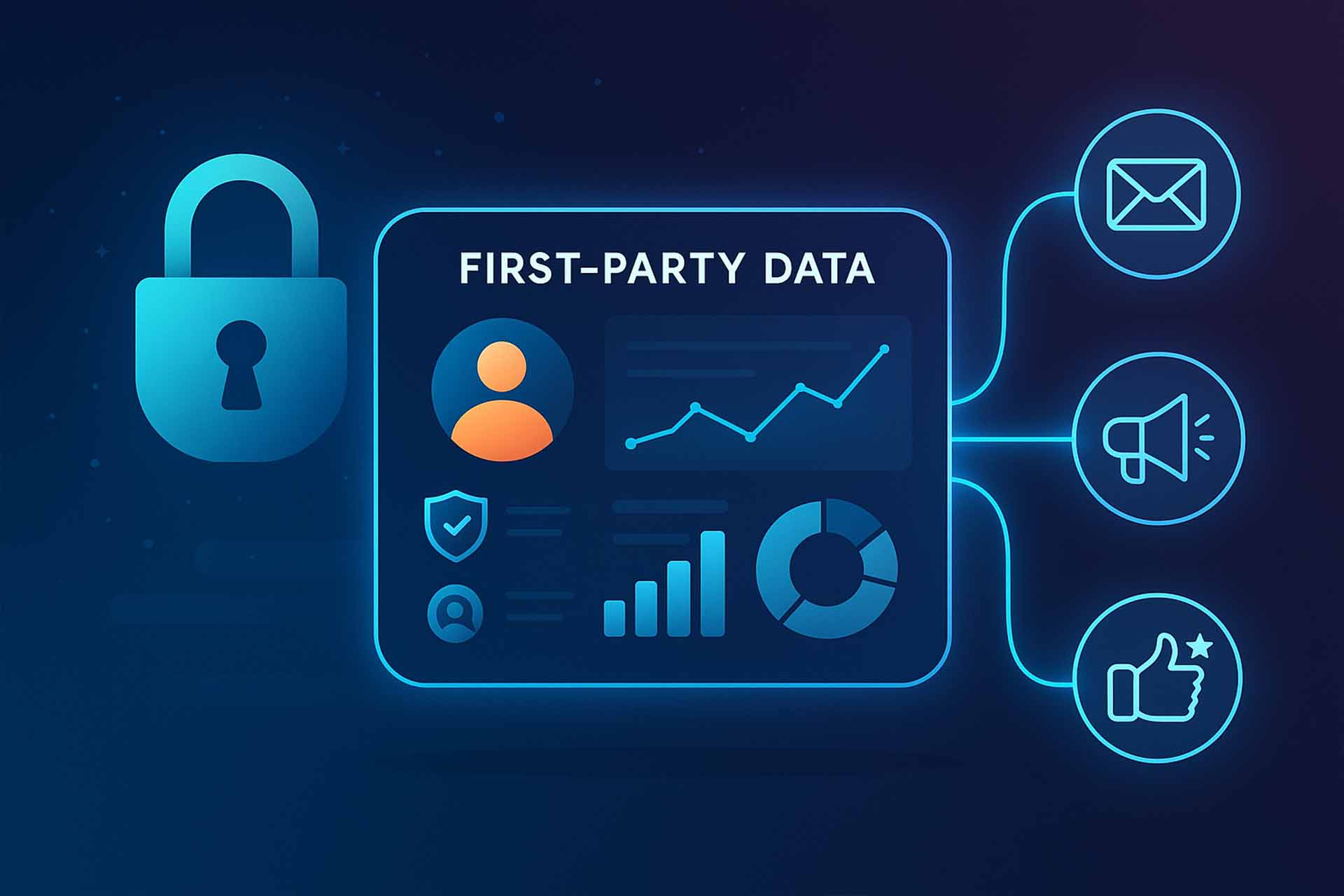
How to Prepare Your Marketing Strategy for the Era of First-Party Data
With the rapid shift in privacy regulations—such as the phasing out of third-party cookies—first-party data has become the cornerstone of every successful marketing strategy. Brands that embrace this shift can strengthen trust, personalize experiences, and future-proof their marketing efforts.
What Is First-Party Data?
First-party data refers to the information a company collects directly from its customers. This includes purchase history, website behavior, subscription details, preferences, and other interactions across your digital platforms. Unlike third-party data, it is accurate, trustworthy, and legally compliant—making it a valuable asset for long-term growth.
How to Build a Winning First-Party Data Marketing Strategy
1. Shift from Buying to Building
Instead of buying email lists or renting data from external sources, focus on building genuine, direct relationships with your customers. Purchased data is often unreliable, outdated, and may even create legal risks. Building trust ensures your data is both accurate and ethically collected.
2. Collect Data Smartly
Use creative and customer-centric methods to gather first-party data:
- Exclusive Content: Offer reports, guides, or webinars that require sign-ups. This encourages customers to share their details voluntarily.
- Loyalty Programs: Reward customers who provide more information by offering perks, discounts, or exclusive access.
- Surveys & Preference Centers: Short questionnaires not only collect useful insights but also give customers control over their data.
- Behavioral Analytics: Track website engagement—pages visited, time spent, and products viewed—to refine targeting.
3. Activate First-Party Data Across Marketing Channels
Once collected, activate your data strategically:
- Hyper-Personalization: Send personalized emails, product recommendations, and offers that match each customer’s journey.
- Audience Expansion: Upload your customer lists into platforms like Meta or Google Ads to find lookalike audiences.
- Remarketing: Target visitors who browsed but didn’t buy, showing them tailored ads based on products they viewed.
4. Make Transparency and Trust a Priority
Today’s customers expect brands to respect their privacy. Build trust by:
- Keeping your privacy policy clear and easy to understand.
- Explaining how and why you collect data, and how it’s protected.
- Allowing customers to update preferences or opt out anytime.
Final Thoughts
The future of marketing lies in data-driven personalization built on trust and transparency. By embracing first-party data, your brand not only adapts to a cookieless world but also gains a long-term competitive edge.
Ready to unlock the full power of first-party data for your business?
At Loop Media, we help brands design advanced marketing strategies that boost customer trust and accelerate growth.
📩 Get in touch today and let’s build a data-driven future together.
- 📞 (+966) 53 692 8397
- 📧 Support@loop-media.co
- Visit our Contact Us page.
This article is available in Arabic. You can read the Arabic version [here].
 العربية
العربية


